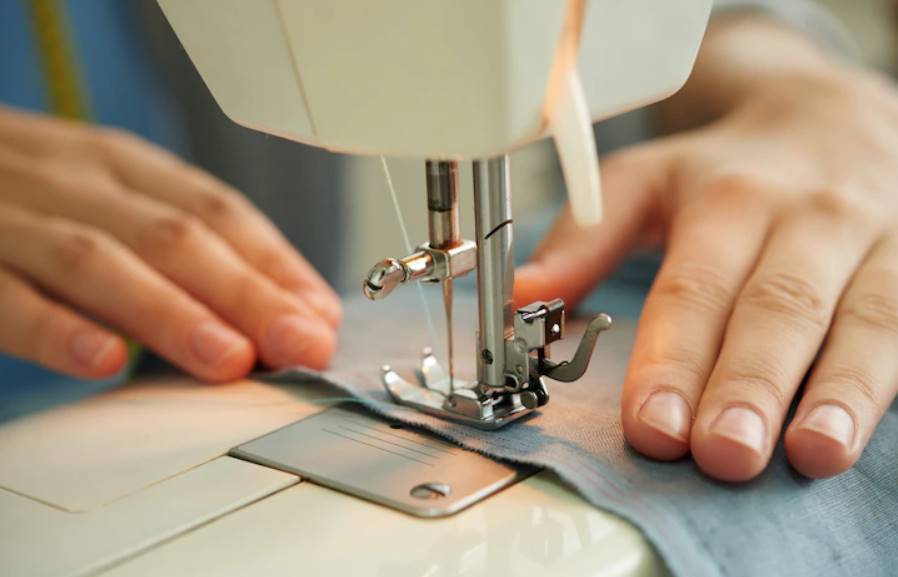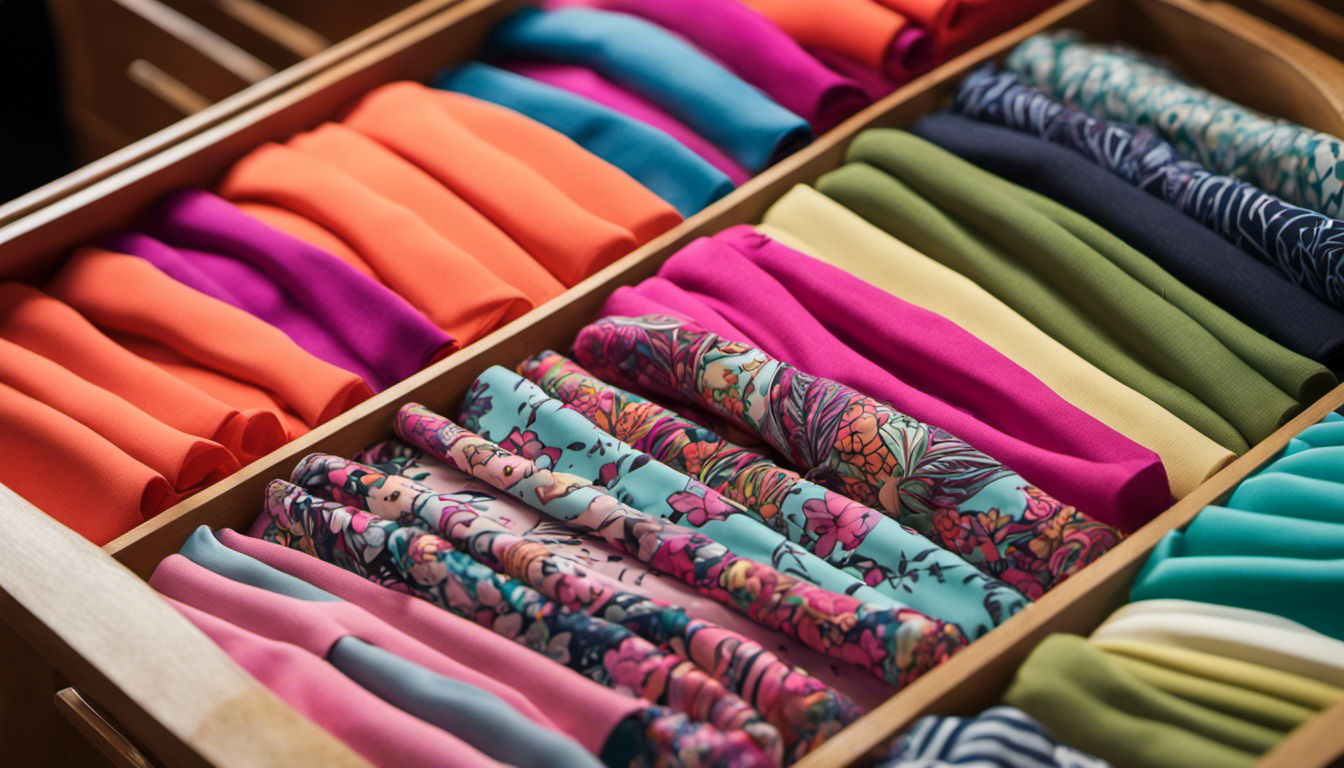The art of tailoring has long been used to create garments that fit perfectly, from the subtle adjustments of a suit jacket to the intricate customizations of a formal dress. Tailoring is an essential skill for those who want to make sure their clothes fit to perfection, and this article will provide an overview of the fine art of tailoring and how to get the perfect fit every time.
We will discuss the different types of tailoring, other fabrics and how to tailor them, tools you will need, and tips for a successful tailoring experience. By the end of this article, you will be well-equipped to ensure that all of your garments fit to perfection.

Understanding Body Types
Getting the perfect fit for your clothes is a fine art that requires knowledge, skill, and patience. But it all starts with understanding your body type and how it affects the fit of your clothing. Knowing your body type can help you make the right decisions when it comes to purchasing clothing, and it can also help you find the perfect tailor to ensure that the clothes you buy fit you perfectly.
Understanding Different Body Types
There are a few different body types that can affect the fit of your clothing. Knowing your body type can help you determine the right style of clothing and the right fit for you.
The first type of body is the pear shape. This body type generally has narrower shoulders and a wider midsection and hips. People with a pear-shaped body typically look better in clothing that has a fitted top and a more relaxed fit on the bottom.
The second type of body is the apple shape. This body type typically has a larger midsection and a narrower lower body. People with an apple-shaped body look better in clothing that has a more relaxed fit on the top and a more fitted bottom.
The third type of body is the hourglass shape. This body type is characterized by having an even balanced top and bottom. People with an hourglass shape typically look better in clothing that is tailored to fit their curves.
The fourth type of body is the rectangle shape. This body type is characterized by having a more straight and even shape with little to no curves. People with a rectangle shape typically look better in clothing that has a more tailored fit.
Tips for Determining Your Body Type
Determining your body type is the first step in getting the perfect fit for your clothes. Here are some tips to help you determine your body type.
- Measure your shoulders, waist, and hips to determine your body shape.
- Look in the mirror to see how your clothing fits.
- Ask a friend or family member for their opinion on your body type.
- Try on different styles of clothing to see what looks best on you.
- Talk to a professional tailor for advice on what clothing will fit you best.
Taking Accurate Measurements
Accurate measurements are essential in many tasks, from carpentry to engineering, to baking. Taking accurate measurements ensures that the project is done correctly and is completed safely. Furthermore, it is important to have accurate measurements in order to ensure that the finished product meets the desired specifications.

Benefits:
- Ensures the safety of the project
- Ensures the finished product meets the desired specifications
- Prevents mistakes and costly errors
- Helps to save time and money
Tools Needed for Measuring:
- Tape Measure: This is the most common tool used for measuring and is typically used to measure length and width.
- Calipers: Calipers are used to measure the inner and outer diameter of an object. They are also used to measure the depth of a hole.
- Steel Ruler: A steel ruler is a straightedge used to measure distances and draw straight lines.
- Level: A level is a tool used to measure the horizontality of a surface or object.
- Protractor: A protractor is used to measure angles.
Tips for Taking Accurate Measurements
- Pay close attention to detail – Double check each measurement to make sure it is accurate.
- Make sure all tools are properly calibrated – Make sure the tools are properly calibrated and in good condition before taking measurements.
- Use the right tools for the job – Use the right tools for the job to ensure accuracy.
- Use the metric system – Using the metric system is the best way to ensure accuracy when taking measurements.
- Take multiple measurements – Take multiple measurements to ensure accuracy.
Choosing the Right Fabric
Different Types of Fabrics and their Suitability for Different Occasions and Body Types
Fabrics come in a variety of types, each suited for different occasions and body types. Cotton is a light, breathable fabric that is perfect for warm weather. It is also lightweight, making it ideal for casual wear. Linen is another light, airy fabric that is cool and comfortable, perfect for summer days. Wool and cashmere are more insulating and provide warmth in cold weather. They are also more substantial and create a more formal look. For a more luxurious look, silk and satin fabrics are perfect. They are also great for eveningwear, as they provide a polished, sophisticated look.
How to Choose the Right Fabric for the Desired Effect
When choosing a fabric, it is important to consider the occasion, the climate, and body type. For a casual look, lightweight fabrics such as cotton or linen are ideal. For a more formal look, heavier fabrics such as wool or cashmere are perfect. For eveningwear, silk and satin fabrics provide a luxurious and sophisticated look.

It is also important to consider the climate when choosing a fabric. For hot weather, lightweight fabrics such as cotton or linen are best, as they are breathable and allow for air circulation. For cold weather, heavier fabrics such as wool and cashmere are ideal, as they provide more insulation.
Finally, when choosing a fabric it is important to consider body type. For petite figures, lightweight fabrics can create an elegant and sophisticated look. For larger figures, heavier fabrics can provide a flattering and structured silhouette.
Benefits of Choosing the Right Fabric
- Easily create a desired look
- Maximize comfort
- Allow for air circulation
- Flattering for different body types
- Provide insulation for cold weather
Tips for Choosing the Right Fabric:
- Consider the occasion
- Consider the climate
- Consider the body type
- Choose lightweight fabrics for hot weather
- Choose heavier fabrics for cold weather
- Choose fabrics that are flattering for your body type
Finding the Right Tailor
For many people, finding a reliable and trustworthy tailor can be a challenge. Whether you’re looking for a custom-made suit or seeking alterations on an existing garment, having a reliable tailor is essential. Here are some tips and considerations to help you find the right tailor for your needs.
Benefits of Having a Tailor
- A tailor can make adjustments that fit better and make you look better.
- A tailor can take an off-the-rack garment and make it look like it was made just for you.
- A tailor can help you create a unique style that reflects your individual sense of fashion.
- A good tailor will be able to advise you on the right fabrics and cuts for your body type.
Tips for Finding the Right Tailor
- Ask for referrals from friends and family who have used a tailor before.
- Look for tailors who specialize in the type of garment you are looking for.
- Check online reviews to get an idea of the tailor’s quality of work.
- Make sure the tailor is willing to give you a free consultation and estimate.
- Visit the tailor’s shop and look for signs of professionalism and cleanliness.
The Importance of Communication and Trust
When you’re looking for a tailor, it’s important to find someone you can trust. It’s essential to be able to communicate openly and honestly, as it will be a major factor in the success of the project. Make sure the tailor understands your needs and expectations, and that they are willing to work with you to ensure that you are satisfied with the end result. A good tailor will be able to offer advice and guidance based on their experience. They should also be willing to make any necessary adjustments if the finished product doesn’t meet your expectations.
Finding the right tailor can be a challenging process, but it’s worth the effort when you find someone you can trust and rely on. By following the tips outlined above, you’ll be able to find the perfect tailor for your needs. With the right tailor, you’ll be able to create garments that are stylish, well-made, and fit your individual style.
Understanding Tailoring Techniques
Tailoring techniques such as darts, pleats, tucks, and gussets can be used to create a tailored fit that is tailored to the wearer’s body shape. These techniques can be used to create a better fit, improve the overall silhouette, and create a more flattering look.
Tailoring can be used to address specific fit issues, such as adding extra fabric in the bust area to accommodate a larger bust size, or removing excess fabric to create a slimming effect. It can also be used to adjust the fit of pants, jackets, and other garments.
Alterations and Fittings
Alterations and fittings are essential for getting the perfect look and fit for any garment. It involves taking in or letting out fabric from the seams and hems, as well as making adjustments to the waist, bust, and shoulders. It is important to have clear communication and feedback throughout the process to ensure that the desired outcome is achieved. It is also important to be flexible and open to input from the tailor or seamstress who is making the alterations. With proper communication and feedback, the alteration and fitting process can result in a perfect fit that is tailored to the individual’s body and preferences.
Caring for Tailored Clothing
Caring for tailored clothing is essential for keeping it looking great and extending its life. To maintain the perfect fit, hang tailored garments on wide, padded hangers and store in a cool, dry place. Cleaning tailored clothing should be done with care. Hand wash or use a delicate cycle on the washing machine and hang to dry. Iron on a low setting, if necessary. Regular dry-cleaning is recommended to keep tailored clothing in good condition. Proper storage and cleaning are important to preserve the quality and fit of tailored clothing.
Conclusion
The fine art of tailoring is a rewarding skill that can help anyone look their best. With the right knowledge and skill, anyone can achieve a perfectly tailored fit every time. By understanding the importance of details such as measurements, fabrics, and stitching, and following the steps outlined in this article, you can confidently create tailored clothing that is both stylish and comfortable. For more information on tailoring, consider visiting your local tailor, taking a course in tailoring, or consulting online resources. With the right guidance, you can create tailored clothing with the perfect fit.
FAQs – Art of Tailoring
1. What is the most important factor for getting the perfect fit when tailoring?
The most important factor for getting the perfect fit when tailoring is to ensure accurate measurements are taken. Taking accurate measurements of the body can help ensure the tailoring is done correctly.
2. What is the difference between made-to-measure and bespoke tailoring?
The difference between made-to-measure and bespoke tailoring is that made-to-measure garments are pre-made and altered to fit the individual, while bespoke tailoring is custom-made to the individual’s unique measurements.
3. What kind of fabrics can be used for tailoring?
Tailoring can involve a variety of fabrics including wool, cotton, linen, silk, and synthetic fibers. The fabric used depends on the garment and the desired look.
4. What is the best way to store tailored clothing?
The best way to store tailored clothing is to hang it in a dry, well-ventilated area. It is also important to protect the fabric from direct sunlight and other sources of heat, as this can damage the fabric over time.
5. How long does it take to get a tailored garment?
The time it takes to get a tailored garment varies depending on the complexity of the garment and the availability of materials. Generally, it can take anywhere from a few days to a few weeks to get a tailored garment.
6. What is the importance of a fitting when tailoring?
A fitting is an important part of the tailoring process as it allows the tailor to assess the fit of the garment and make adjustments if necessary. It is important to be honest and open with the tailor during the fitting to ensure the best results.
7. What should I look for when choosing a tailor?
When choosing a tailor, it is important to look for someone with experience and expertise in tailoring. Ask to see examples of their work and read reviews from other customers to get an idea of their quality and customer service.
8. How often should tailored clothing be cleaned?
Tailored clothing should be cleaned regularly and according to the fabric type. Generally, wool and cotton garments should be dry cleaned, while synthetic fabrics can be machine washed.
9. How can I make sure my tailored clothing lasts as long as possible?
To ensure your tailored clothing lasts as long as possible, it is important to take care of the fabric and store it properly. It is also important to take it in for regular fittings and alterations to keep the fit perfect.
10. Is tailoring expensive?
The cost of tailoring depends on the complexity of the garment and the type of fabric used. Generally, tailoring a garment can be more expensive than buying ready-made clothing, but the perfect fit and quality of the garment is worth the extra cost.


























